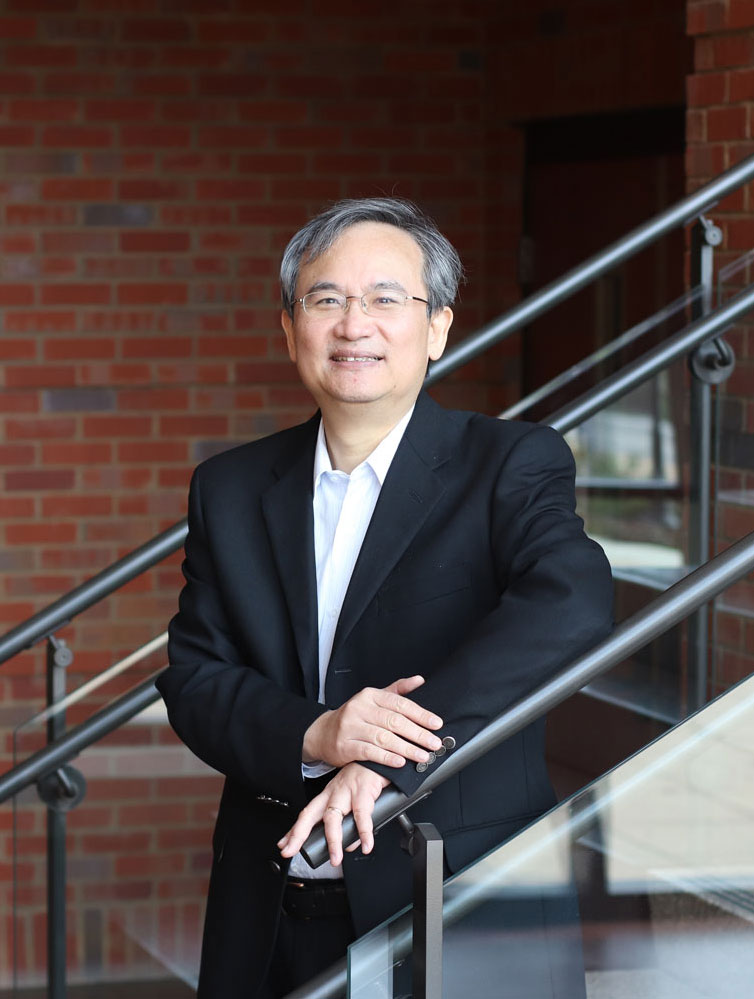Writing and Photography by Randall Brown.
Clouds of debate over the value of artificial intelligence fill the skies of popular discourse these days, but UT researchers on the forefront of AI technology breathe more easily knowing what an important tool it can be to further science—and, in some cases, to literally help clear the air.
New research published this summer by Joshua Fu—Chancellor’s Professor, John D. Tickle Professor, and James G. Gibson Professor in the Department of Civil and Environmental Engineering—examines a multitiered method to increase the quality of data when measuring air pollution with the machine modeling techniques of an AI approach.
Historical measuring methods track pollutants from known sources like industry, automobiles, and wildfires and factor in meteorological information like wind and precipitation. That approach produces limited information, though, in measuring the impact of multiple types of pollutants.
Fu’s team added machine-modeled datasets—a machine learning and measurement-model fusion, or ML-MMF—to deliver a more dynamic and accurate picture of a region’s air quality. After comparing the resulting predictions with actual pollution measurements, they found that their results were 66 percent more accurate that the usual methods.
“We combine them together, so we fix the uncertainty using ML-MMF,” said Fu. “We saw that the data represented more real-world measurements.”
The datasets measure levels of ozone pollution that forms from a blend of two emissions caused by humans: nitrogen oxides from power plants and volatile organic compounds from petroleum-based fuels in automobiles and industry. Those more detailed measurements can inform better ways to reduce air pollutants.
“If we reduce them, they will not form ozone and particulate matter,” said Fu.
The approach could also influence policies that help alleviate respiratory illnesses and other negative effects from air-pollution.
His study, published in Ozone Response Modeling to NOx and VOC Emissions: Examining Machine Learning Models, looked at a daily ground-level ozone average in a case study in Taiwan, whose environmental protection agency has comprehensive air-quality monitoring stations around the country.
“We chose Taiwan because we can get very good datasets, like hospital data, the air-quality modeling data, and also the measurement data,” said Fu. “We don’t have an easy way to combine all that data together in the world.”
He believes the innovative combination of techniques may eventually be applied in major cities and impactful situations such as wildfires, and hopefully can be used to refine guidelines and improve quality of life from an environmental standpoint. A follow-up study in the works will add information about impacts to public health, using data such as mortality rates and potential economic costs.
“This is going to introduce this methodology to the community,” said Fu. “If you want to get a better quality of data than current modeling guidelines, this is one good approach.”
